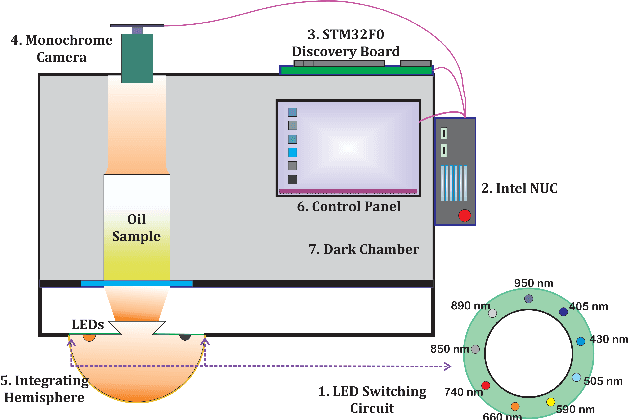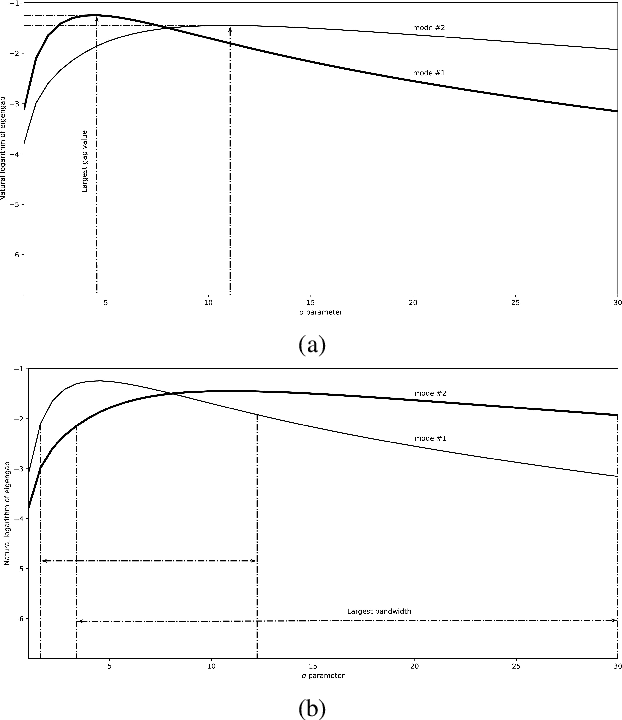Transmittance Multispectral Imaging for Reheated Coconut Oil Differentiation
Paper and Code
Aug 28, 2021



Multispectral imaging systems (MISs) have been used widely to analyze adulteration and toxin formation in oil, yet a dearth of attention has been tendered to oil reheating and reusing despite the consumption of such debased oil being deleterious. To that end, the paper discusses the application of MISs to estimate the 'reheat cycle count classes' (number of times an oil sample is recursively heated) and to identify 'critical classes' at which substantial changes in the oil sample have materialized. The MIS captures the transmittance spectrum of the translucent specimen as opposed to other multispectral imaging research which often measures the reflected light from opaque solid samples. Firstly, the reheat cycle count class is estimated with Bhattacharyya distance between the reheated and a pure oil sample as the input. The classification was performed using a support vector machine classifier that resulted in an accuracy of 83.34 % for reheat cycle count identification. Subsequently, to distinguish critical classes under reheating, an unsupervised clustering procedure was introduced using a modified spectral clustering (SC) algorithm. In addition, laboratory experiments were performed to ascertain the ramifications of the reheating process with a chemical analysis. The chemical analysis of the coconut oil samples used in the experiment yielded that a statistically significant change (p < 0.05) had taken place in the chemical properties with reheating and the results of the proposed SC framework were deemed to coincide with the chemical analysis results.
 Add to Chrome
Add to Chrome Add to Firefox
Add to Firefox Add to Edge
Add to Edge